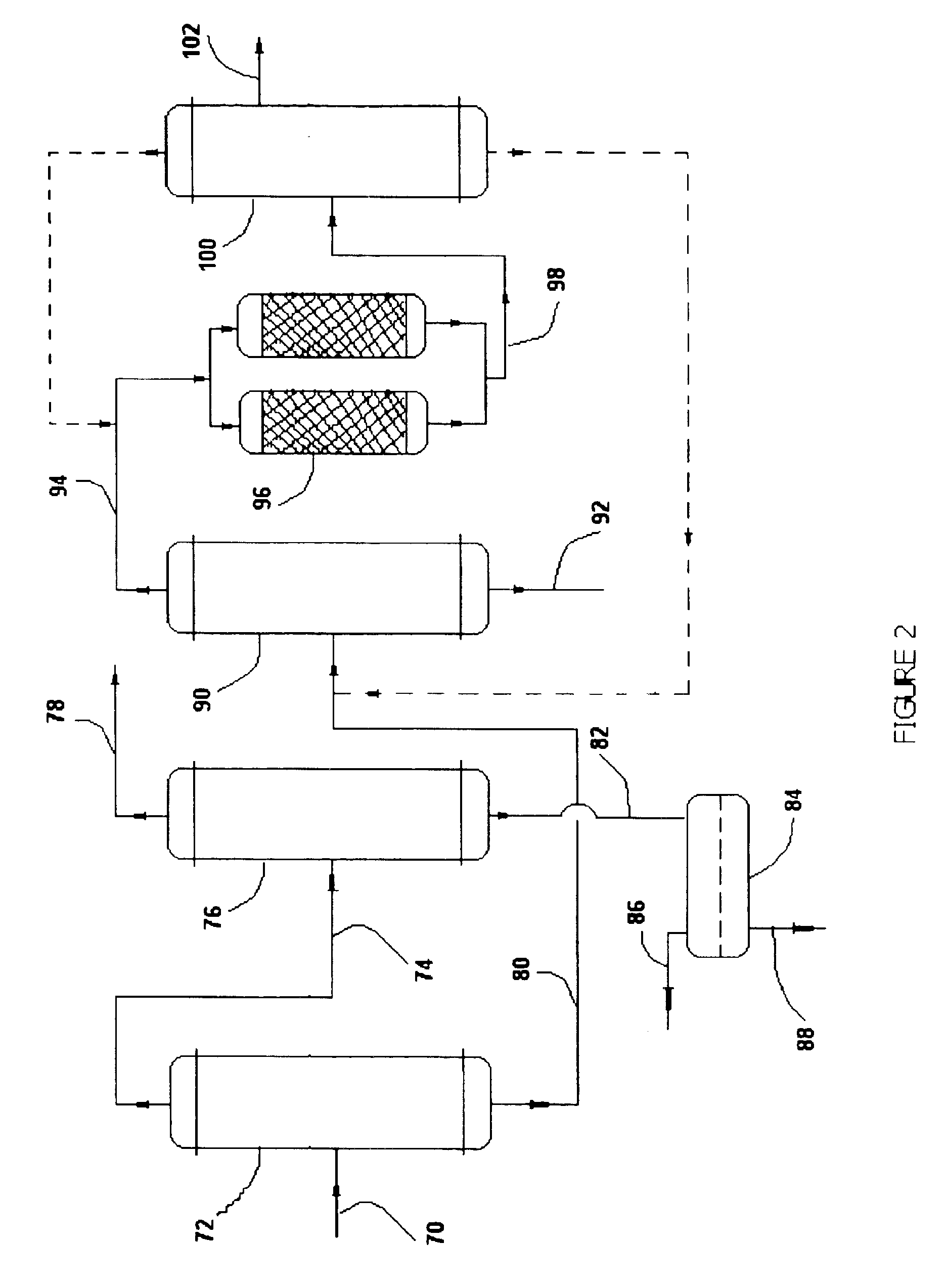High selective method of producing cumene hydroperoxide, phenol and acetone in an oxidation by-product conversion process
a technology of acetone and phenol, which is applied in the field of petrochemical synthesis, can solve the problems of cumene oxidation product recovery almost intractable problem, and the quality of acetone resulting from the presence of almost inseparable aldehydes from acetone remains unresolved, so as to achieve high selectiveness and high quality final products , the effect of increasing process productivity
- Summary
- Abstract
- Description
- Claims
- Application Information
AI Technical Summary
Benefits of technology
Problems solved by technology
Method used
Image
Examples
example 1
[0063]Oxidation products of the composition shown in Table 1 below were continuously introduced to the conversion reactor 14, to which a circulating aqueous hydrogen peroxide solution was also added (as described in connection with FIG. 1 above). To maintain the specified hydrogen peroxide concentration in the reactor of 33 wt %, a fresh hydrogen peroxide solution containing 35 wt % of the latter was also added to said circulating solution. The aqueous to organic phase volumetric ratio was maintained at 1:1. The temperature in the reactor was adjusted to 60° C. The contacting time was one hour. There were no acidic catalysts added to the reactor. After being treated in the reactor with aqueous hydrogen peroxide solution, the oxidation products were then forwarded to a phase separator. The separated organic phase was sent to the evaporator and analyzed. The aqueous phase recycled back to the reactor. Table 1 represents the oxidation product composition after the aldehyde / dimethylbenz...
example 2
[0064]The inventive conversion oxidation process was carried out in a similar manner as in Example 1; with the difference that 0.2 wt % orthophosphoric acid was added to the circulating aqueous hydrogen peroxide solution to the reactor. The results obtained are shown in Table 1 .
example 3
[0065]The inventive conversion oxidation process was carried out in a similar manner as in Example 1; with the difference that 10 wt % acetic acid was added to the circulating aqueous hydrogen peroxide solution to the reactor 14. As the acetic acid solubility in the organic phase was about 1.4 wt % under the process conditions, a fresh acetic acid solution was added to the reactor 14 to keep the acetic acid concentration constant. The results obtained are shown in Table 1.
PUM
| Property | Measurement | Unit |
|---|---|---|
| Temperature | aaaaa | aaaaa |
| Temperature | aaaaa | aaaaa |
| Fraction | aaaaa | aaaaa |
Abstract
Description
Claims
Application Information
 Login to View More
Login to View More - R&D
- Intellectual Property
- Life Sciences
- Materials
- Tech Scout
- Unparalleled Data Quality
- Higher Quality Content
- 60% Fewer Hallucinations
Browse by: Latest US Patents, China's latest patents, Technical Efficacy Thesaurus, Application Domain, Technology Topic, Popular Technical Reports.
© 2025 PatSnap. All rights reserved.Legal|Privacy policy|Modern Slavery Act Transparency Statement|Sitemap|About US| Contact US: help@patsnap.com



